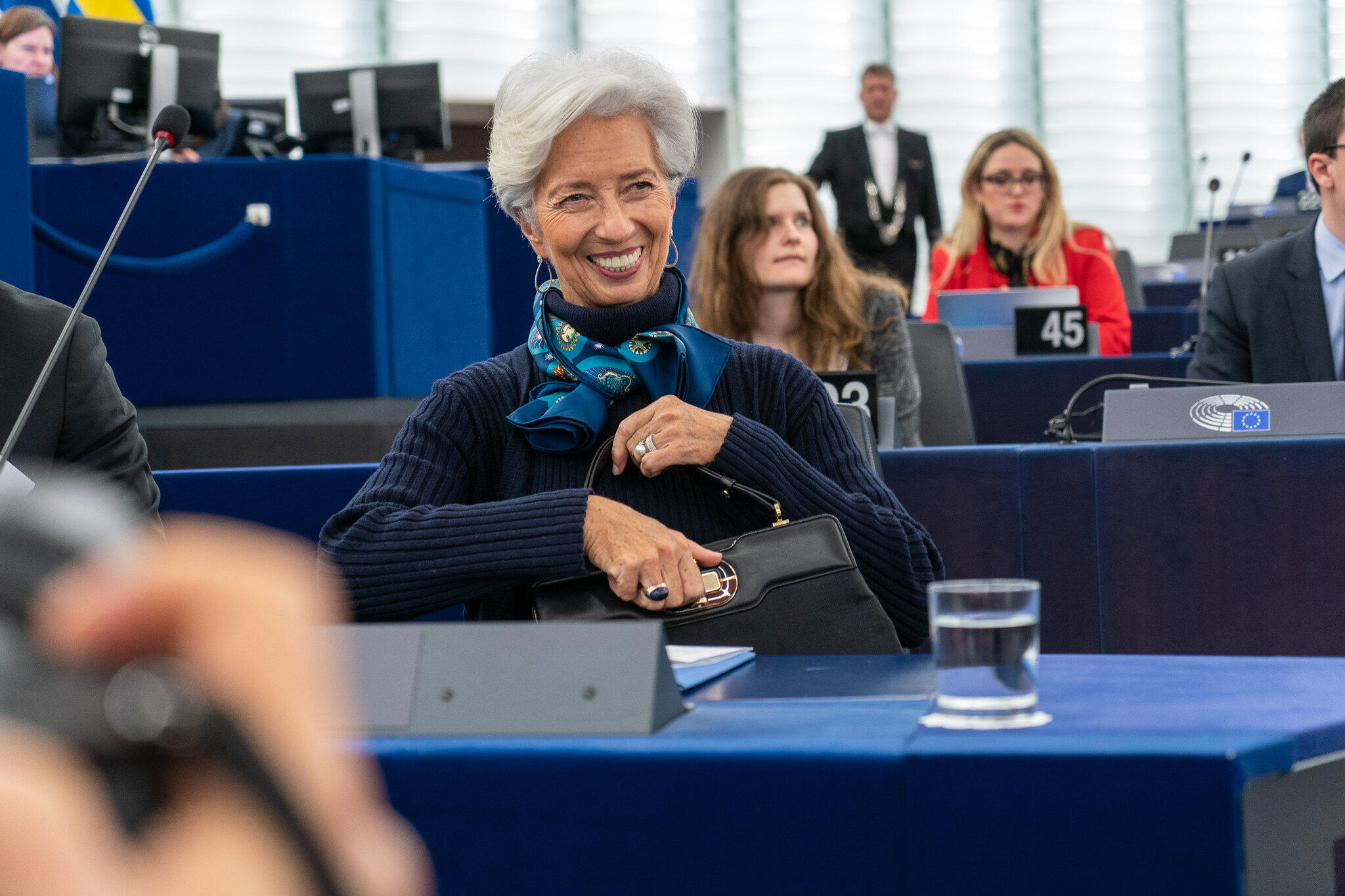Central banks across major economies are taking markedly different routes through the final months of 2025 amid uneven progress in the fight against inflation.
From the European Central Bank reaching the terminal point of its easing cycle to the Bank of Japan weighing its first hikes in years, let’s take a deeper look at central bank dynamics across the globe.
United States – Fed Begins Easing, but Caution Prevails
The Fed has started cutting rates after a long pause. In September 2025, it lowered the federal funds rate by 25bp to 4.00–4.25% and followed with another 25bp cut on 29 October to 3.75–4.00%.
This brought rates 150bp below their peak in August. Policymakers’ forecasts (the “dot plot”) had signalled roughly two cuts by year-end, and indeed markets initially priced in a third cut by December.
However, Chair Powell reiterated that further easing is data‑dependent, warning that a December cut is “not a foregone conclusion”.
Inflation in the U.S. remains above target. The Fed’s preferred PCE inflation was about 2.7% year‑on‑year in August (core PCE 2.9%) – down from its 3–4% peaks but still modestly above 2%.
This underlies the Fed’s caution: the October statement noted “inflation has moved up since earlier in the year and remains somewhat elevated”.
Similarly, a recent Reuters report noted that officials have debated the timing of further cuts, with some arguing for “waiting a cycle” to confirm disinflation before easing more.
On employment, the Fed projects unemployment rising to about 4.5% in 2025 (from ~4.2% now), reflecting its view of a cooling labour market.
After delivering two quarter‑point cuts, officials signal that any additional reductions will depend on incoming data.
Indeed, with the CME Group FedWatch Tool indicating a 60-70% chance of a year‑end rate cut, many policymakers still see a delicate balance between growth and inflation risks.
Eurozone – ECB Pauses at 2% as Inflation Nears Target
The ECB trimmed its deposit rate from 4.00% to 2.00% through aggressive cuts in 2024–25, but has paused its easing cycle in recent meetings.
In its October meeting, the ECB held rates unchanged at 2.0% and noted that inflation is now roughly at target (around 2%) and growth near potential.
Recent data show headline inflation dipping, though core remains somewhat sticky. After falling below 2% in mid‑2025, inflation ticked back up to 2.2% in September.
The ECB sees incoming data as key: its October statement emphasised uncertainty from energy prices, the firm euro, and global trade tensions.
Policy hawks at the ECB note that fiscal easing could reignite price pressures, while doves point to global weakness.
For now, markets believe the ECB is done cutting: investors price roughly a 40–50% chance of another quarter‑point cut by mid‑2026.
Overall, the ECB appears content to pause and watch, having achieved its easing so far and waiting for more clarity on whether inflation truly settles at target.

United Kingdom – BoE on Hold, Cuts Deferred to 2026
The Bank of England has eased from its mid‑2024 highs but is now on hold. After cutting rates from 5.25% to 4.25% in 2024, the BoE lowered its main rate to 4.00% in August 2025 and has kept it steady since.
At the November 2025 meeting, it left the Bank Rate at 4%, acknowledging that while inflation, which hit 3.8% in September, remains well above the 2% target, it is gradually cooling.
Indeed, recent forecasts see inflation dipping toward the target by 2026.
Policymakers have shifted to a “dovish hold”. A Reuters poll found most economists now expect no further easing in 2025, deferring cuts into next year.
The BoE has noted that any cut decision will depend on incoming data and the upcoming fiscal budget (due Nov).
With expected tax increases and only modest growth, analysts say the first 2026 cut will likely be small and contingent on inflation trends.
Markets currently put about a 50–60% chance on a cut by December 2025.

Japan – From Decades of Easing to Imminent Hikes
Japan has effectively flipped its monetary stance. After more than a decade of ultra‑loose policy, the BOJ began tightening in January 2025, lifting its short‑term rate to 0.50%.
It held that rate steady through September and October. Minutes of the September meeting reveal that some board members pressed for further hikes – two even proposed raising the policy rate to 0.75%.
Governor Ueda has since signalled that a December hike is likely if data allow.
Inflation in Japan has been well above target (headline ~3–4% in mid‑2025), driven in part by energy and food costs.
However, underlying inflation pressures are easing, so the BOJ is keen to lock in gains without surprising markets. As one BOJ member noted, hiking too quickly could spook markets.
Overall, the BOJ’s focus is shifting to “when”, not “if”, to tighten further.
With inflation still around 3% (well above 2%) and wage growth slowly picking up, many economists expect the next step to 0.75% to come before the end of 2025.
Switzerland – SNB at Zero, Negative Rates Off the Table
The Swiss National Bank has cut its policy rate repeatedly since 2024 as Swiss inflation turned negative, but for now, it remains at 0%.
In September 2025, the SNB held its policy rate at zero, noting a small uptick in inflation to within its 0–2% range.
Chairman Schlegel reiterated that while negative rates are technically possible, there are “high hurdles” because of their side‑effects.
The SNB warned that U.S. tariffs were worsening the outlook and is ready to ease further if inflation falls too low.
For now, with inflation very low and growth weak, markets see only a modest chance of another cut; analysts generally view September’s hold as appropriate given currency considerations and deflation risk.

Other Key Economies
Australia (RBA): After pausing at 3.85% in July, the RBA cut the cash rate by 25bp to 3.60% in August 2025. It has since held at 3.60% in early November as inflation spiked above policymakers' 2–3% target range.
Governor Bullock has flagged a cautious easing path, and markets expect rates will stay at these levels pending further data on inflation and employment.
New Zealand (RBNZ): The RBNZ surprised with an aggressive 50bp cut in October 2025, bringing the OCR down to 2.50%.
Officials cited a frail economy and inflation back in the 1–3% target band, and they signalled further cuts if needed.
Markets now price another cut to 2.25% (with about a 60% chance of 2.00%) as the Bank aims to stabilise growth while keeping inflation near its midpoint.
A new Governor, Anna Breman, will also take office on 1 December 2025.
Canada (BoC): The Bank of Canada cut its overnight rate to 2.25% in October 2025, the second consecutive 25bp cut.
Governor Macklem noted that cuts are meant to offset U.S. tariffs and keep inflation near 2%.
The BoC signalled that this easing cycle is likely done for 2025 – “about the right level” for now – unless the outlook worsens.
Futures markets agree: they currently price no further cuts until early 2026, as the Bank waits to see how the economy absorbs past cuts and external shocks.
Sweden (Riksbank): Sweden’s Riksbank held its rate at 2.00% in August, then cut it by 25bp to 1.75% in September.
The decision aimed to support growth as inflation (around 3%) was seen as driven by temporary factors.
Officials expect rates to stay at 1.75% for some time, as they balance disinflation against fiscal stimulus from recent tax cuts.
Norway (Norges Bank): In June 2025, Norway surprised markets by cutting its policy rate to 4.25% in June, its first cut since 2020. It followed with another cut to 4.00% in mid‑September.
Officials see inflation falling quickly and are lowering rates cautiously. The Committee indicated more cuts are likely if the economy evolves as expected, with the baseline of one or two further 25bp cuts by the end of 2025.
Notably, by September, Norges Bank softened its language on the pace of easing, saying that incoming data suggest inflation will stay elevated longer, so it will “not reduce the rate as quickly as before summer”.
Conclusion
From a global perspective, monetary policy appears to be on an increasingly divergent path. The U.S. Federal Reserve has initiated modest easing but stresses data dependence, even hinting at slowing down rate cuts.
In Europe, the ECB appears to have reached the end of its easing cycle and is holding rates steady as inflation nears the target.
The Bank of England has paused at post‑pandemic lows, deferring further cuts amid high inflation and an uncertain fiscal backdrop.
In contrast, Japan is poised to shift from easing to tightening; after raising rates to 0.5% in January, the BOJ is widely expected to hike again by year‑end.
Smaller economies are following their own courses: New Zealand aggressively cut rates in October, while Norway, Sweden and Australia are in the midst of measured easing. In this uneven global landscape, central banks emphasise flexibility and vigilance.
Over the coming months, policymakers and markets will watch data and geopolitical developments closely to see whether these divergent paths converge toward equilibrium or diverge further.



